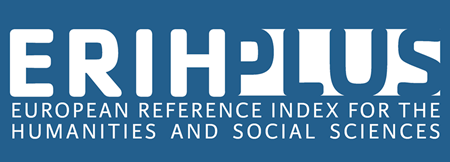VERBALIZATION OF GENDER IDENTITY IN GRETA GERWIG’S MOVIE “BARBIE”
DOI:
https://doi.org/10.32782/folium/2024.5.6Keywords:
IDENTITY concept, gender identity, femininity, masculinity, cinematic discourse, social rolesAbstract
The article analyzes the gender features of the concept IDENTITY in the movie «Barbie» (2023), which became a bright cultural phenomenon that caused lively discussions on the issues of femininity, masculinity and the search for personal identity. The purpose of the study was to analyze the linguistic means by which gender roles and stereotypes are presented in the film. These elements not only represent gender roles, but also reflect sociocultural changes that shape contemporary ideas about gender identity and its transformation. An important aspect of this work is the study of how the image of Barbie, perceived as a symbol of traditional gender stereotypes, changes under the influence of new social realities. The representation of ideas about masculine identity is also analyzed using the example of Ken and other characters in the movie «Barbie». The study explores how the film presents generalized notions of masculinity and the issues associated with the stereotyping of gender roles through the portrayal of the Kens and the unique character of Allan. The film’s narrative encourages Ken to embark on a journey of self-discovery, emphasizing the importance of individual identity beyond societal expectations and material attributes. Special attention is paid to the study of how traditional ideas about masculinity are reproduced through the image of Ken and how they are transformed in the context of modern society. Language devices are used to represent the concept of male gender identity. In the film, Ken appears not only as a symbol of traditional male roles, but also as a character looking for his place in the social hierarchy, often being in the shadow of Barbie. This allows the film to explore issues of male independence and self-realization in a world where traditional gender roles are being reinterpreted. A further perspective of the research is a more in-depth analysis of gender aspects in modern cinema, taking into account different socio-cultural contexts. A comparative analysis of the representation of gender stereotypes in films of different cultures and their influence on the formation of general ideas about gender in different age groups of viewers becomes especially important.
References
Бойчук І. М. Відображення гендерних стереотипів у сучасному кінематографі. Наукові записки факультету культурології. 2018. Т. 3, № 2. С. 87–99.
Коваль О. В. Роль фільму «Барбі» у переосмисленні традиційних гендерних уявлень. Вісник кінознавства і культурології. 2023. Т. 5, № 2. С. 45–58.
Кузнєцова І. С. Концепт «identity» у когнітивній лінгвістиці: семантична структура та культурні аспекти. Мовознавчі дослідження. 2019. Т. 11, № 1. С. 78–92.
Поліщук М. В. Метафоричне представлення концепту «identity» в англомовному художньому дискурсі. Науковий вісник лінгвістики. 2020. Т. 4, № 3. С. 102–115.
Сергеєва А. М. Гендерна ідентичність у сучасному кіно: трансформація стереотипів. Культура і сучасність. 2021. Т. 9, № 4. С. 33–47.
Сидоренко Л. П. Фільм «Барбі» як віддзеркалення соціальних змін: гендерна перспектива. Гендерні студії в кінематографі. 2023. Т. 2, № 1. С. 21–34.
Gerwig G., Baumbach N. «Barbie» script. 2023. 115 p. URL: https://deadline.com/wp-content/uploads/2024/02/Barbie-Read-The-Screenplay. pdf (дата звернення: 20.09.2024).
Неlgeson V.S. Тhе psychology of gender. Boston: Реаrson, 2012. 148 p.











